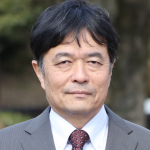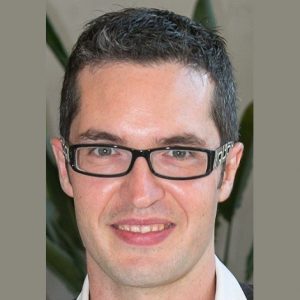 François Fages François Fages
François Fages is Research Director at Inria Saclay Ile de France. He passed his Doctorate Thesis in 1983 at age 23 on unification theory and automated deduction, and got a research position at CNRS, Ecole Normale Supérieure, where he worked on the theory and practice of rule-based programming, with also part-time assistant professorship at Ecole Polytechnique (1985-98) and part-time consultancy at Thomson-CSF/Thales group (1985-96). In 1999 he joined Inria and got interested in computational systems biology. He currently leads the LIFEWARE project-team, coordinates the development of the BIOCHAM modeling software for systems and synthetic biology, and collaborates with biologists on challenging questions in cell signaling, cell cycle, circadian clock control and biochemical reaction network design. He gives Master courses on “Biochemical programming” and “Constraint-based modeling and algorithms for decision making”. In 2014, he received the Michel Monpetit prize from the French Academy of Sciences, and in 2019 the La Recherche magazine award.
Title of the talk: Turing-completeness of chemical reaction networks in natural cells and artificial vesicles.
Abstract: Chemical reaction networks (CRN) are a formalism widely used in chemistry and biology to describe complex systems of molecular interactions. The proof of Turing-completeness of elementary CRNs interpreted by ordinary differential equations with mass-action law kinetics means that any computable function over the real numbers can be computed by a CRN over a finite set of molecular species. In this view, the molecular concentrations are the information carriers, the analog programs of the cell are determined by the set of all possible reactions with the protein encoded in the genome and the molecules of the environment, and gene expression determines program change. We illustrate this approach with the computer-aided design of CRN for implementing oscillators, switches, analog-digital converters, boolean functions, and their implementation in DNA-free artificial vesicles.
|
 Hiroshi Matsuno Hiroshi Matsuno
Hiroshi Matsuno received B.E. and M.E. in Electronics from Yamaguchi University in 1982 and 1984, respectively. He received the Ph.D. from Kyushu University in 1994. He is currently a professor in Graduate School of Science and Engineering for Innovation, Yamaguchi University, Japan. After firstly applying hybrid Petri net to the modeling of gene regulatory network in 2000, he has been working on Petri net modeling for cellular processes including signal transduction and metabolic network, recently focusing on cell-cell interaction modeling of Drosophila and grobal scale metabolic networks of E.coli. He is a member of Institute of Information Processing Society of Japan and Japanese Society for Bioinformatics.
Title of the talk: Petri nets for cellular process modeling.
Abstract: Petri nets have established its position as a formal method in systems biology, which are suitable for modeling the concurrent and asynchronous behaviors of cellular reactions. Depending on the biological phenomenon to be treated, different kinds of Petri nets, such as timed Petri nets, stochastic Petri nets, hybrid Petri nets, and colored Petri nets, are used to model cellular systems in single-cell as well as multi-cell levels. Petri nets provide a benefit to both of modelers and biologists, enabling them to share the same executable model owing to its graphical representation.
Petri nets have been applied to the modeling of intracellular reactions including metabolism, signal transduction and gene expression as well as the modeling of intercellular reactions such as diffusion, colony growth, and pattern formation. These models were simulated by Petri net tools specifically developed for cellular process computations, succeeded in presenting hypothetical insights into systematic behavior of cellular reactions. In this talk, I will present the latest achievements of Petri net modeling in cellular processes with referring to the history of Petri net modeling in systems biology.
|
 Nathalie Théret Nathalie Théret
Nathalie Théret is a director of research at the French Medical Research Institute (INSERM) and she is currently a research group leader at the Research Institute for Environmental and Occupational Health. She is specialized in studying microenvironment remodeling in chronic liver diseases and the implication of metalloproteases and TGF-b-dependent regulatory pathways. Over past decade, she developed collaborative projects with computational researchers to address the biological complexity of liver fibrosis and tumor progression. One of them is the Cadbiom project which is developped in collaboration with DYLISS team at the “Institut de Recherche en Informatique et Systèmes Aléatoires”.
Title of the talk: A framework for modelling large-scale signaling networks.
Abstract: The modelling of the discrete dynamics of signaling networks is based on various formalisms using rules, logic models or cellular automata (Biocham, Pint, Caspo, Kappa). However, these approaches cannot be applied to large-scale models and their construction is based on a priori data selection. The automatic construction without a priori of large models implies the use of standardized knowledge sources and the BioPAX language fully fulfils this function. We develop a new framework that integrates BioPAX networks from the Pathway Commons database into discrete dynamic model using garded transition formalism. Searching for causalities of gene expression implicated in epithelia-mesenchymal transition demonstrates the efficacy of such approaches to decipher complexity of signaling and regulatory networks.
|
 Francine Diener Francine Diener
Francine Diener is Emeritus Professor of Université Côte d’Azur, Nice, France. After having trained herself as a pure mathematician in the field of dynamical systems, she devoted herself to various application fields of mathematics, economics, finance and, more recently, biology. Since 2010, she collaborates with the bioinformatics team at the I3S research laboratory in Sophia Antipolis, France. She has contributed to the creation of several undergraduate and post graduate teaching programs in computational biology at Université Côte d’Azur.
Title of the talk: Why are slow-fast dynamical models and their canards interesting tools to understand neuronal spiking behavior.
Abstract: In 1955, FitzHugh pioneered the use of geometrical approach (dynamical systems) and topological ones (bifurcations) to study the Hodgkin-Huxley model. In the late 70ties, thanks to the use of Nonstandard Analysis (NSA1), one realized that when dynamical systems involve two (or more) time scales, a new phenomenon, the canards, must be taken in account. In this lecture I will explain, on the simple example of FitzHugh-Nagumo model of spikes generation, what is a canard, a specific kind of slow solution of slow-fast dynamics. I will then give and explain their main properties and show some of the advances already made in the understanding of neuronal models and show some open problems that canards could help to better understand.
I will also give some hint on what is NSA and how it made it possible to discover the canards and their properties and how it can help in solving problems involving different time scales.
|
 Sylvain Benito Sylvain Benito
Sylvain Benito is co-founder and Chief Science Officer at ExactCure, a start-up based in Nice and dedicated to e-health. He has officialy joined the project in august 2018. Prior to that Sylvain held a position of research scientist for more than five years at Dassault Systèmes within the Corporate Research Department. His scientific areas of interest include modelling in pharmacometry, quantitative systems pharmacology and systems biology as well as applied mathematics ans scientific computing. Sylvain holds a Ph.D. in applied mathematics and scientific computing (Univ. Bordeaux 1, 2009) and M.Sc in scientific computing (Univ. Bordeaux 1, 2005) and applied probability (Ecole des Ponts, 2011).
Title of the talk: Quantitative pharmacology: difficulties and use-cases.
Abstract: Quantitative pharmacology is playing an increasing role both at fundamental level (where ADME processes as well as mechanisms of actions are encoded into predictive models) as well as at clinical one (where efficient connexion with clinical outcomes is sought). Reconciliating this two levels is a challenge with major implications for research as well as clinical practice. This talk will review some difficulties to solve as well as some tentative state of the art approches published in the litterature, together with use-cases.
|

